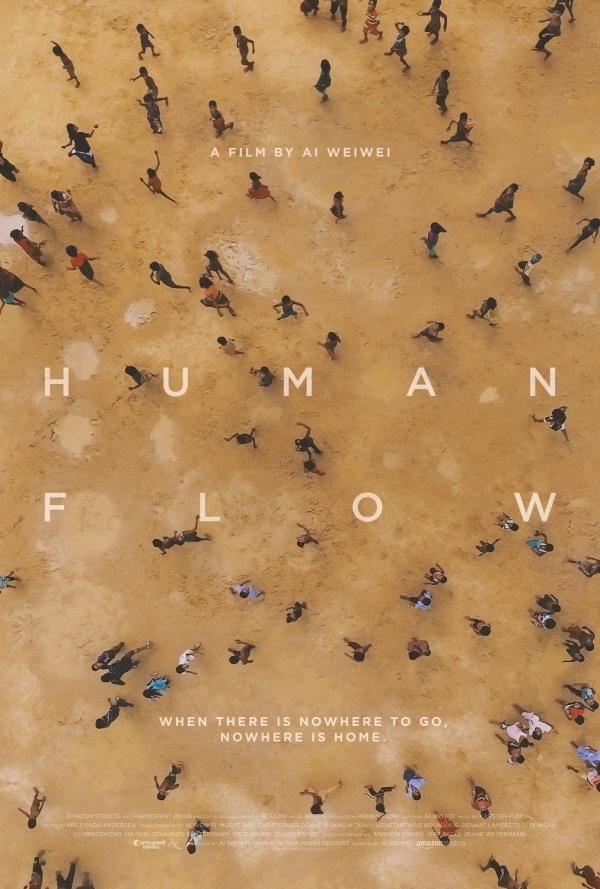HUMAN FLOW (Directed by Ai WeiWei, 140 minutes, Germany, 2017)
BY DANIEL PATRICK WARD Human Flow director Ai WeiWei often presents the observer with a simple, yet sharp image in his art that forces us to see beyond just the physical scope of the piece itself. As a globally-renowned Chinese dissident and outspoken critic of his country’s government, he certainly fears no boundary when creating art that purposefully draws attention to the many crises affecting humanity across the globe.
In Human Flow, Ai tasks himself with capturing our planet’s refugee crisis, which affects over 65 million people, in such a way that the individual weight of each refugee’s struggle can be felt by anyone who watches the film. The inter-connected nature of our society dictates that many who see this film will be familiar with many of the miseries associated with life as a refugee. There are sweeping shots of endless caravans of people carrying their belongings down a winding road, and an over-crowded camp full of children at play while their parents struggle to barely keep their families alive. Unfortunately, with refugees featuring so prominently in our news cycle over the past few years, this is nothing the average citizen hasn’t seen before on the nightly news. These drone-captured images have become a bit cliché, but Ai only uses them to point to the scale of these mass migrations. Beyond these all too common depictions of the collective lives of refugees, Ai made a point to capture the pain and hardship that these people face through harrowing testimony and intimate shots of the individual human beings involved in the crisis.
Throughout the course of the movie, Ai touches just about every corner of the globe, allowing the audience to realize the immensity of the situation at hand. He takes account of refugees in Europe, Africa, Asia, and beyond. We visit camps full of people from Syria, Iraq, and Afghanistan, but also those from countries less associated with the crisis such as Kenya and Burma. The scale of some of the encampments is so staggering that they have created their own city-like operation with fully functioning economies at work. These images alone are enough to shake the audience, but the real shock comes from the faces of those who live in these places. Their expressions are often blank, yet in this lack of emotion you can see their despair. No matter their race, gender, religion, or beliefs, their common humanity has been uprooted from the core. Their lives and homes were stripped away, and they now move from place to place hoping those more fortunate than them can find it in their heart to allow them a home.
Nothing that Ai articulated through this movie was groundbreaking or monumentally earth-shattering material. However, what he was able to accomplish was to make the emotions of the refugees he filmed accessible to those of us watching at home. Rather than have us understand them as just one group, 65 million strong, seeking a new home, he showed us what it feels like to live in an overcrowded camp with less than humane conditions or to be starving and unsure where the next meal will come from. Overall, Ai’s movie fits right in with his vast body of art. It is direct to its point, powerful, and more than a little bit critical of the powerful institutions that allow this crisis to take place.

